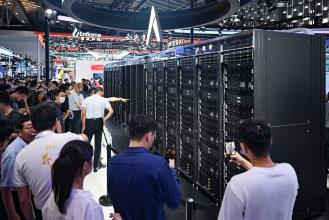OpenAI’s $600B Multi-Cloud Compute Strategy: How AWS, Oracle & Microsoft Share the Bet
- 06 November, 2025 / by Fosbite
Why OpenAI is diversifying its cloud bets
OpenAI has shifted from a single-provider model to a broad, multi-cloud compute strategy — allocating massive multi-year commitments across Microsoft, Oracle and now Amazon Web Services (AWS). This strategy is less about vendor loyalty and more about securing scarce high-performance GPU capacity for both training and inference at global scale.
How the deals break down
Recent reporting indicates OpenAI has committed roughly $250 billion back to Microsoft, $300 billion to Oracle, and a new $38 billion multi-year agreement with AWS. While the AWS portion is the smallest, it still provides access to hundreds of thousands of NVIDIA GPUs (including GB200/GB300-class accelerators) and tens of millions of CPUs.
What this means for compute availability
In my experience covering cloud infrastructure, access to leading-edge GPUs is no longer easily obtainable on short notice — it’s a capacity play that requires multi-year capital commitments. OpenAI’s contracts lock in supply, latency-optimized networking, and custom server designs to ensure predictable performance for heavy inference workloads like ChatGPT.
Key technical details
- GPU scale: hundreds of thousands of accelerators including GB200s/GB300s.
- CPU access: tens of millions of cores for orchestration, preprocessing, and inference funnels.
- Networking: EC2 UltraServers and purpose-built fabrics for low-latency, high-throughput parameter updates and model parallelism.
Why hyperscalers are racing to win AI workloads
Hyperscalers see AI compute as the cornerstone workload of the next decade. AWS is using this deal to demonstrate an ability to support clusters exceeding half a million chips, while Microsoft and Google continue to tout rapid cloud-revenue growth driven by AI customers. The competition is strategic: securing marquee AI customers both drives new revenue and attracts a broader ecosystem of startups and enterprises.
What enterprise leaders should take away
Executives planning AI rollouts should reframe assumptions about cost, timing, and sourcing:
- Build vs. buy: The massive sums OpenAI is committing show that ground-up ownership of global AI infrastructure is prohibitively expensive for most organizations. Managed platforms like Amazon Bedrock, Google Vertex AI, and IBM watsonx will absorb much of that infrastructure risk.
- Multi-cloud is pragmatic: Relying on a single cloud vendor for mission-critical AI compute is increasingly risky. OpenAI’s multi-provider approach reduces vendor concentration risk and improves resilience. Learn more in our guide to AI infrastructure.
- Budgeting & capital planning: AI compute has moved from variable IT spend to long-term capital planning. Expect procurement cycles and supply commitments measured in years, not months.
Timeline and supply-chain realism
Even with signed agreements, full deployment of capacity will take time. OpenAI’s AWS capacity is not expected to be fully available until the end of 2026, with expansion options into 2027. This reminds CIOs and CFOs that hardware lead times, semiconductor production, and data‑center construction operate on multi-year timelines.
Real-world example: a hypothetical SaaS AI rollout
Imagine a mid-sized SaaS company planning to add real-time, multi-lingual summarization to its product. In a single-cloud scenario, they might be blocked for months waiting on GPU capacity or face unpredictable inference costs. With a multi-cloud approach and managed inference services, they can:
- Leverage pre-provisioned GPU pools for predictable latency,
- Use regional redundancy to meet compliance needs, and
- Move from capex surprises to predictable subscription or committed-use pricing.
That’s not a silver bullet, but it’s a practical way to mitigate risk while still moving fast.
Broader industry implications
OpenAI’s spending spree forces hyperscalers to respond, accelerates specialized hardware development (see vendors like Qualcomm entering the inference market), and reshapes how enterprises consume AI. In short: infrastructure scarcity is driving a new commercial model around long-term compute commitments.
Sources and further reading
For more context on the deals and related hardware developments, see reporting and vendor pages such as OpenAI’s main site and coverage of the Oracle and AWS agreements. Industry events like AI & Big Data Expo also collect talks from leaders across cloud, hardware and enterprise AI. You can also read our analysis of GPU AI infrastructure and market dynamics for background on why GPUs are central to these deals.
Final thoughts
OpenAI’s move is a practical recognition that frontier AI needs guaranteed, optimized compute. As someone who watches this space closely, I’d advise companies to plan AI projects with multi-year timelines, expect to consume AI as a managed service in many cases, and build redundancy into their procurement strategy. It’s an expensive era — but also an era of opportunity for organizations that plan ahead.









